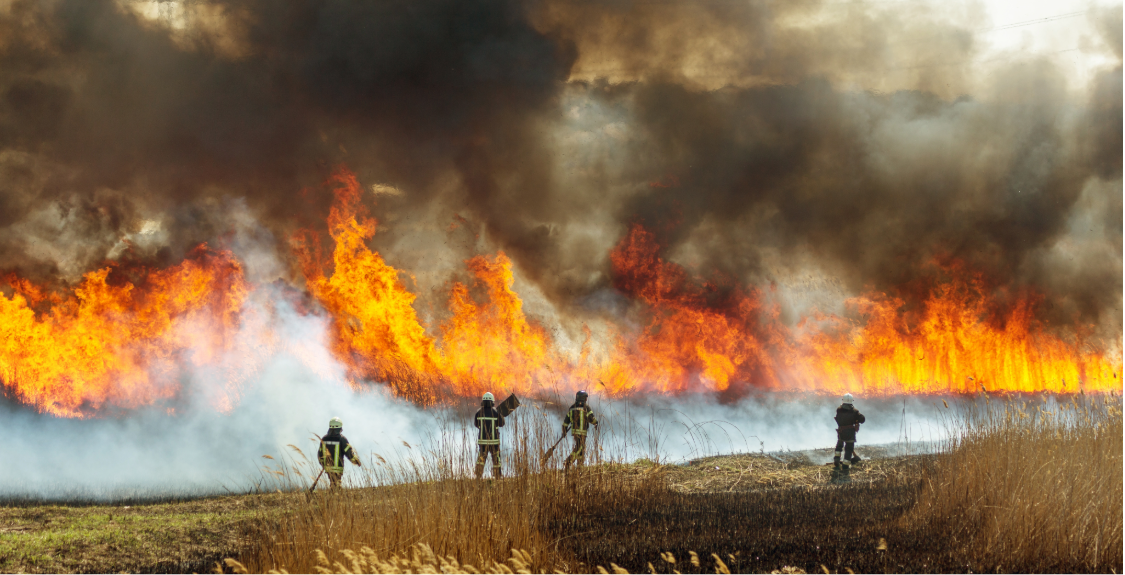AFM NEWS
Preventing Wildfires This Fourth of July

By Jennifer Hunt (Content Writer), Nicole Porter (District Manager), and Brian Vrablick (Intermountain Region Manager)
With the Fourth of July upon us, it’s a good time to review wildfire prevention and safety precautions. Between 1980 and 2016, over 11,000 wildland fires were ignited by fireworks in the U.S., with nearly 63% of these occurring during the two-week period surrounding the Fourth of July. While specific statistics on fireworks-induced wildfires in the Pacific Northwest and Intermountain West (Western Montana, eastern Washington, and Idaho) are limited, national data indicate that fireworks cause an average of 19,000 fires annually in the United States, including structural fires, outside fires, vehicle fires, etc. Since estimates say that 85% of wildland fires are caused by humans, understanding the connection between wildfires and fireworks is key to effective prevention. Let’s review proper safety precautions to ensure that your lively holiday celebration doesn’t become another statistic.
Fire-prone areas, like the Pacific Northwest, are a particular concern during dry, warm months when vegetation is highly flammable. There are several external factors that can impact the burn duration and intensity, which are important to review. First, a warming climate often exacerbates fire risks, as prolonged droughts and rising temperatures create favorable conditions for wildfires. Surface fuels and ladder fuels, like plants on the forest floor and snags, increase the risk of fires that burn longer and hotter. Mountain pine beetles attack trees and plants and cause them to become weaker or lead to mortality. All of these elements factor into wildfire behavior and can turn a celebration into a tragedy. However, adhering to safety precautions can eliminate risks.
First, check your local ordinances to ensure that fireworks can legally be purchased and used on your site. For instance, in Montana, fireworks are strictly prohibited on any lands classified as forest, regardless of whether fire restrictions are in effect. In Washington State, fireworks are illegal except in select locations, so in order to avoid an accident (and a fine!), check that fireworks are permitted in your area. Once you’ve verified that fireworks are permissible, find an appropriate site to light your fireworks and follow these essential safety tips.
- Never light fireworks near dry grass or vegetation or any other flammable materials. As we previously illuminated, surface fuels and ladder fuels can help fires catch and spread quickly, and it can take little to no time to climb up into the tree canopy.
- While it can be tempting to light several fireworks in quick succession for a dazzling show, light one firework at a time for maximum safety. This will enable you to respond rapidly if something is awry.
- Shoot fireworks away from structures, homes, forests, and any other flammable sources.
- Have a hose nearby in the event something unintentionally catches on fire or an expected blaze begins.
- Soak used fireworks in a bucket for 15-20 minutes before disposing of them. This guarantees that the fireworks will not reignite in the trash or refuse pile.
- If a firework is a “dud” or doesn’t light, do not try to relight it! The firework may ignite before you have a chance to get out of the way, leading to injuries or death. Soak it in water before throwing it away.
- Lastly, it’s important to reiterate that alcohol and fireworks do not mix. It could inhibit better judgment and cause delayed reaction times. When it comes to wildfires and your safety, seconds can make a big difference.
At AFM, we want to help keep both you and your forest safe from wildfires and fireworks-related incidents. Following safety guidelines will prevent a trip to the emergency room as well as costly and devastating fires on forest land and wild lands.
If you’re interested in learning more about wildfire prevention, check out our previous article about fuels reduction.
